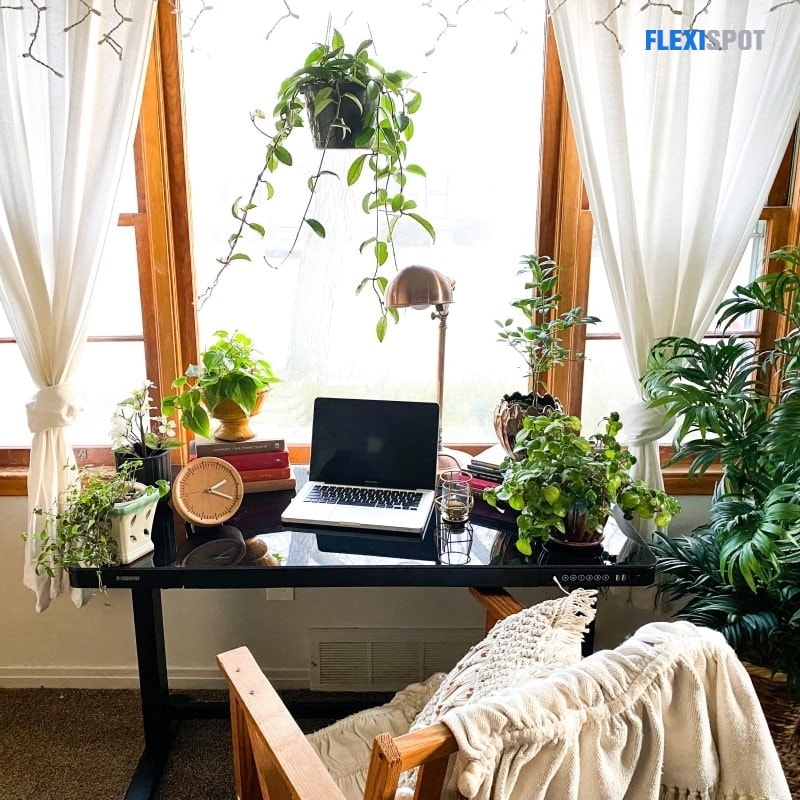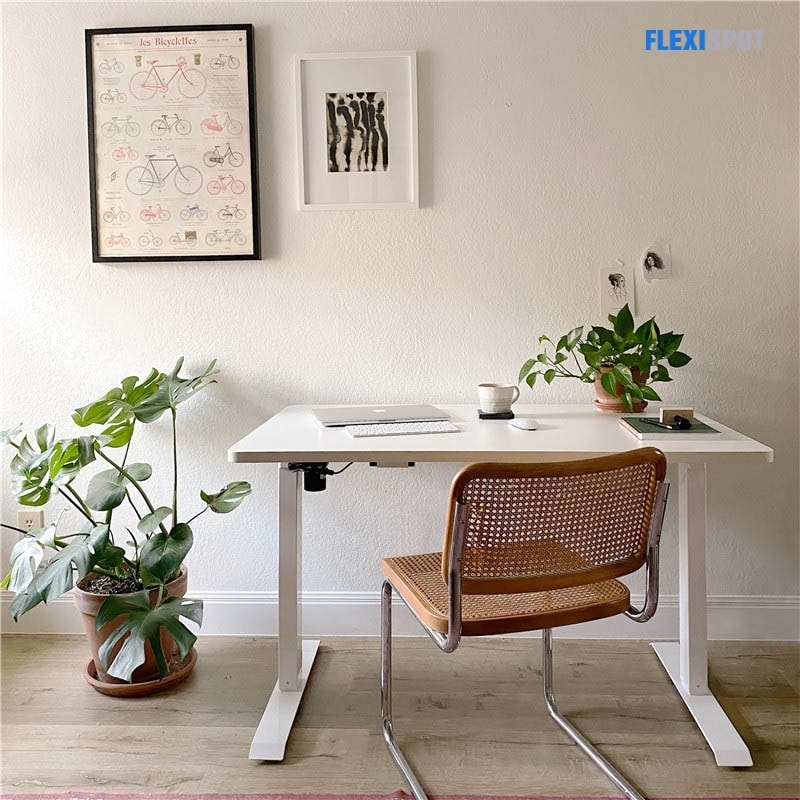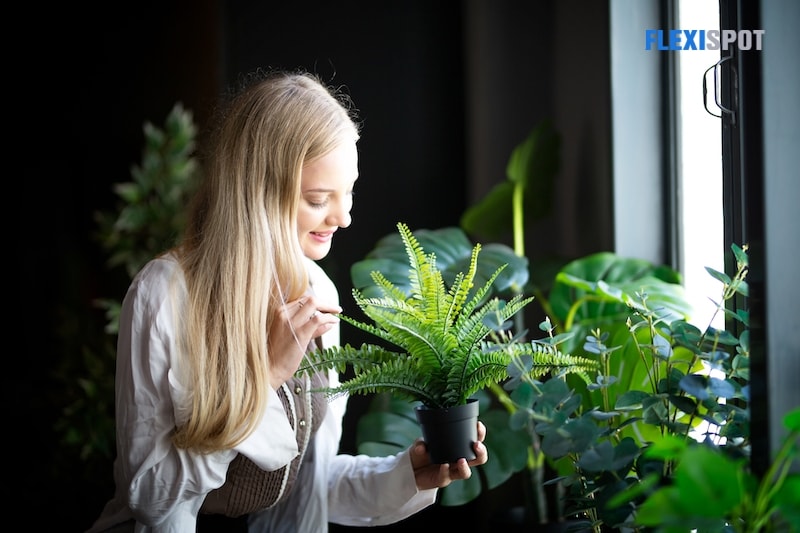Indoor plants have always had a market. People are naturally inclined to nature and bringing a piece of it indoors has always been enticing. Still, it only catered to a niche group so no one could have possibly predicted how popular it was to become in the 21st century, the digital era where people are glued to their screens more than half of their days. But because the COVID-19 pandemic has driven people to stay more at home, the popularity of indoor plants has taken an upward trend. More and more people have realized its benefits that we don’t see the trend dying anytime soon, or ever.
Why Buy an Indoor Plant
1. Relieves Stress and Anxiety
Studies have shown that having plants around helps people cope with depression and other mental health conditions. Some doctors have even been prescribing their patients to get a plant at home.
2. Sharpens Focus
Being surrounded by greenery helps with productivity. Research has also shown that having plants around helps in sharpening someone’s focus to deliver efficient work performance.
3. Improves Air Quality
Some plants have been proven to reduce dust and mold in the air and improve the overall air quality of a space. Plants absorb toxins and produce oxygen that helps in increasing humidity levels.
3. Uplifts Mood
A plant can easily enliven a place. It could boost people’s moods to make them happier and more energized to work.
4. Speeds up recovery
Some studies show that plants can help enable a faster healing process. Sending a loved one some flowers while in the hospital may help speed up their recovery. Having plants inside a hospital room can also do the trick.
5. Therapeutic to take care of
Taking care of plants, watering them, and making sure they get enough light, is therapeutic for most people, even more so when one sees the plants grow.
What to Consider When Buying a House Plant
1. Size
Small and big house plants have different care instructions. Contrary to what you might think, small plants actually need more love and attention than big plants so this is something to note when choosing your first ever indoor plant.
2. Lighting Requirements
All plants need light, whether it be natural or artificial, to survive. You have to know what your plant particularly needs, whether it’s low to moderate indirect light or bright indirect light to full sun or medium bright and indirect light. Knowing this before buying is important so that you could adjust what your home can offer to give the best care for your plant.
3. Kids and Pets
Unfortunately, some plants are toxic so if you have a kid and pet at home, research first if your plant of choice is or will be dangerous for them. Common toxic plants include aloe vera, chrysanthemums, English ivy, jade, mistletoe, poinsettias, pothos, and lilies.
4. Nature of Work
If your work is demanding, don’t buy high-maintenance plants that require thorough care and attention. Only buy plants that you could take care of and won’t become a burden or a chore for you.
5. Plant Care Expertise
There are certain plants that require expert hands. Buy according to your skill level in handling plants. If you’re a beginner, snake plants, ZZ plants, money trees, jade, pothos, and Chinese evergreen are low-maintenance and would be good practice for your plant handling skills. If you’re in the more advanced level, you may opt for moth orchids, elephant’s ear, fig tree, and a bird’s nest fern.
Where to Put the Plant
1. At your work desk
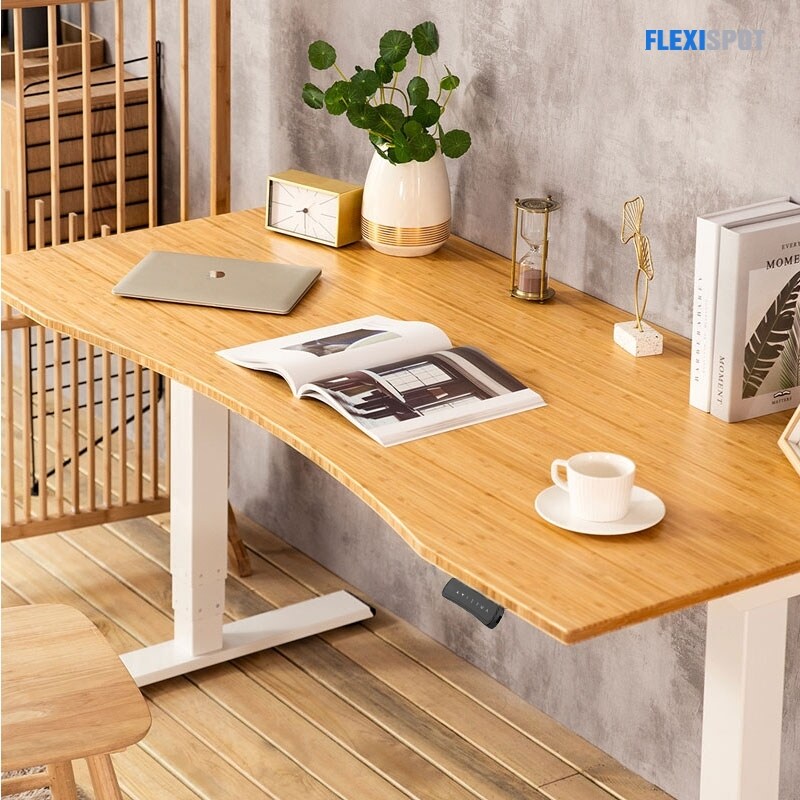
Enliven your work desk with potted plants. Flexispot has a Kana Bamboo Standing Desk that you may either get with a rectangle or curved desktop shape. Made out of bamboo, the sturdy table could carry up to 275 pounds. You may add a potted plant beside your laptop set-up or use the standing desk as decor with potted plants, diffusers, and lamps filling in the space.
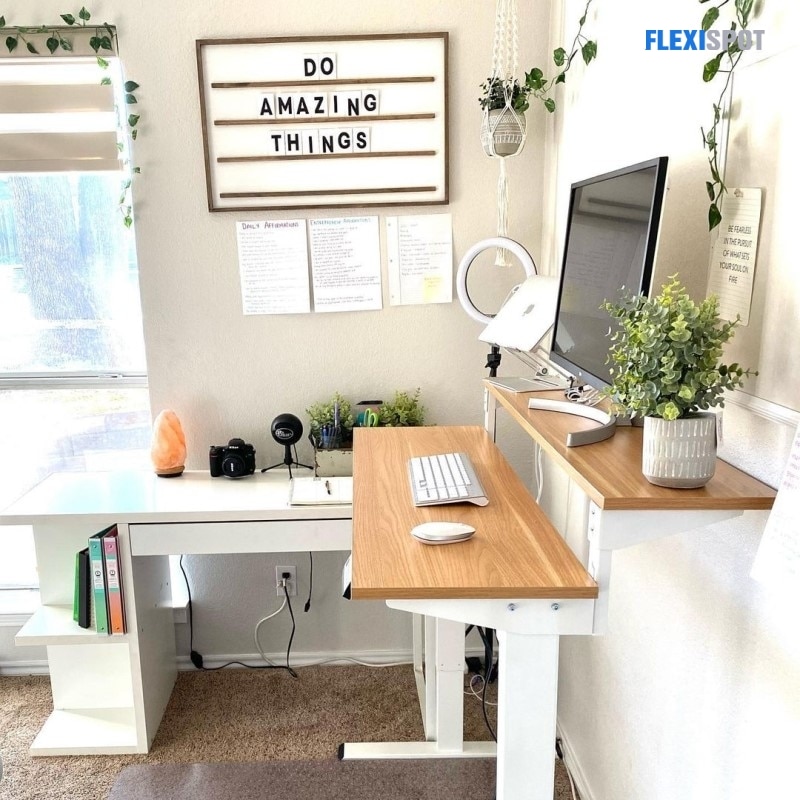
You may also opt for the Vici Duplex standing desk that has two tiers. The 2nd tier may be filled with house plants while the 1st tier is for your work area. This standing desk from Flexispot comes with a height programmable control panel, an adjustable desk feet, and pressure-sensitive height adjustment that automatically senses downward pressure to retract by 1.5 inches and lock the new height.
https://www.flexispot.com/height-adjustable-desks/vici-duplex-standing-desk
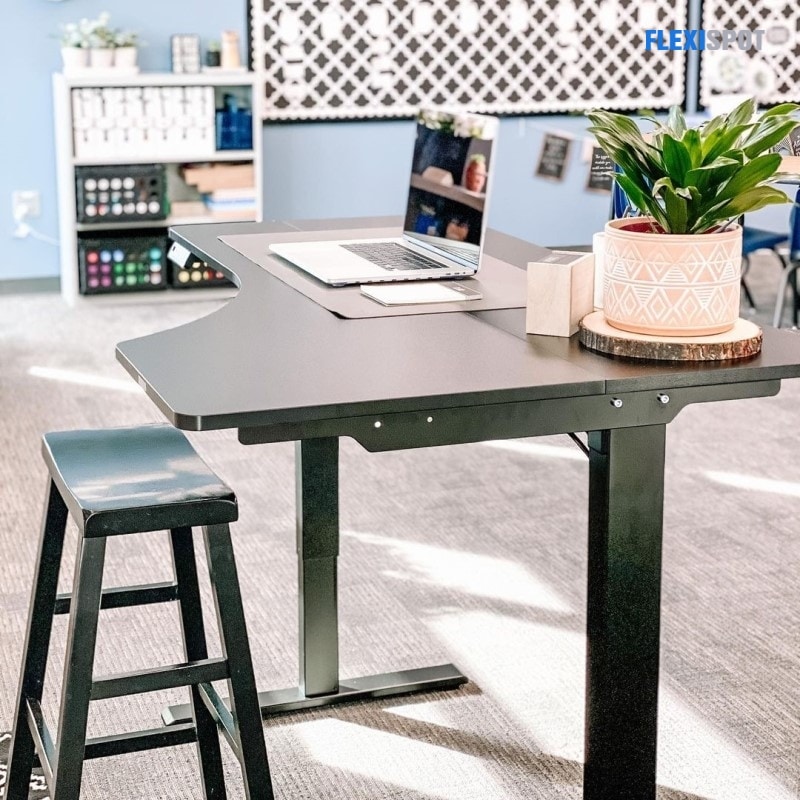
Another conversation piece is the Seiffen Laminated Spliced L-shaped desk. Its unconventional shape adds more personality to your workstation. Putting a potted plant on top will make it even more eye-catching. It’s spacious and versatile with different setups. Like Flexispot’s other adjustable standing desks, it also comes with a height programmable control panel.
https://www.flexispot.com/height-adjustable-desks/seiffen-spliced-l-shaped-standing-desk-ef1l
2. Wall space
Another option is to have a vertical garden or to use your wall space for your house plants. You may opt to buy a grid panel, woodblocks, or planters with pockets.
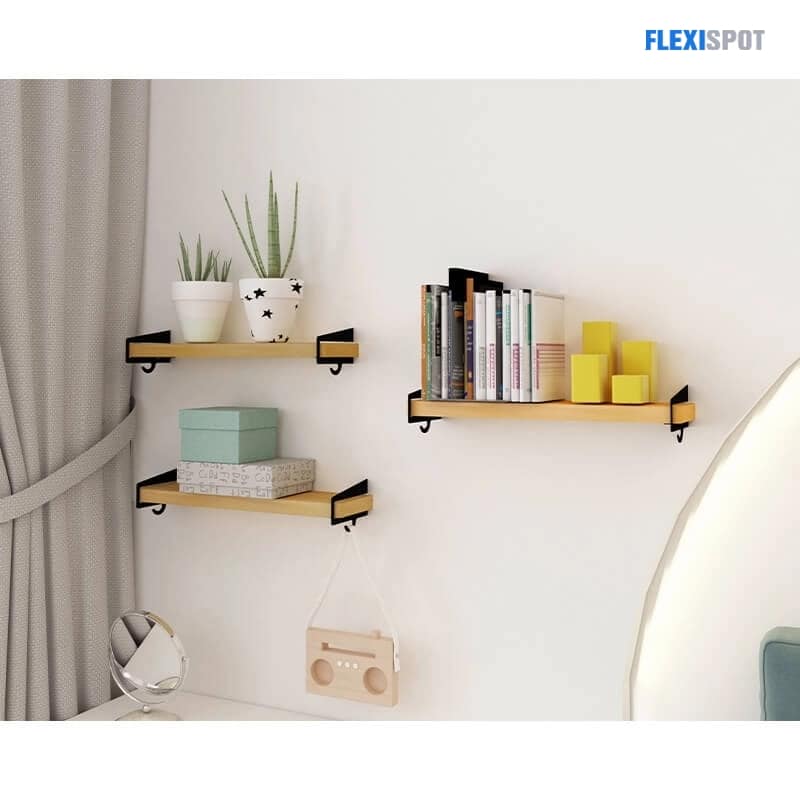
Flexispot also has floating shelves that come in maple and mahogany. Each purchase is a set of three and could each carry 44 pounds. 17.7" long, 0.98" thick, and 6.67" wide, each shelf has ample space for your house plants. It even has built-in hooks where you can hang potted plants that are supported by macrame ropes. Your wall won’t look boring at all.
https://www.flexispot.com/standing-desk-accessories/office-supplies/floating-shelves-wsf1
3. Follow Lighting Requirements
According to The Sill, the direction that your windows face will determine the amount of light they let in your room. North windows allow low to moderate indirect light, South windows give off bright indirect light to full sun in the afternoon, East comes with medium bright and indirect light while West provides medium bright indirect light with the direct sun across the day. Move any obstruction from the window to your plant. You may also buy a light meter to exactly measure how much sunlight your plant is receiving.
In short, place your plant based on the amount of light it needs.
How to Take Care of Plants
1. Let the plant acclimate for about two weeks
A new environment means a new climate that your plant needs time adjusting to. Let it adjust to the different light, humidity, and temperature before moving it around or thinking of repotting.
2. Water your plants in the morning
The most ideal time to water your plants is in the morning. They need to have sufficient water before the sun shines on them and drains it away. Misting for most plants is preferably done in the evenings. It will give extra moisture to a struggling indoor plant.
3.Use the right amount of soil
The amount of water needed varies directly with the volume of the soil. When you have a smaller soil size, water is more able to evaporate from the soil which makes the drying process quicker. On the other hand, bigger plants have more soil which makes them capable of holding more water. These plants don’t need that much regular watering compared to smaller plants.
4.Know your plant
Knowing your plant will help you determine if it’s sick or healthy. You should know the right pigment of its leaves, its growth rate, and more. This will help you determine if the plant is healthy, sick, or old and dying. Necessary adjustments can be easily made if you’re in the know.

